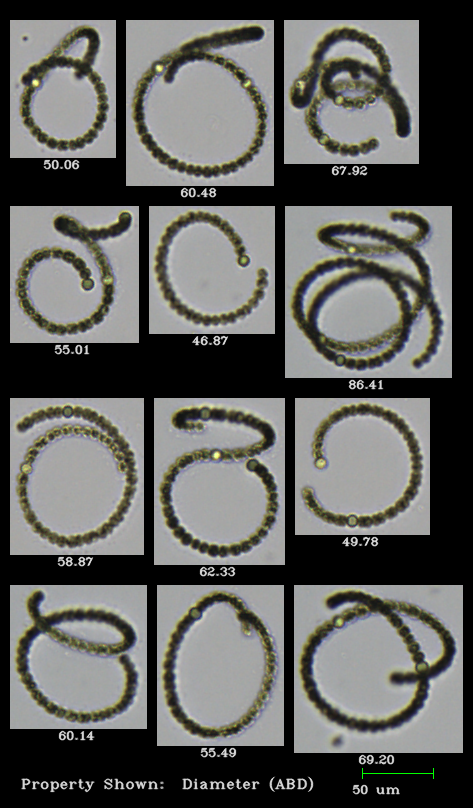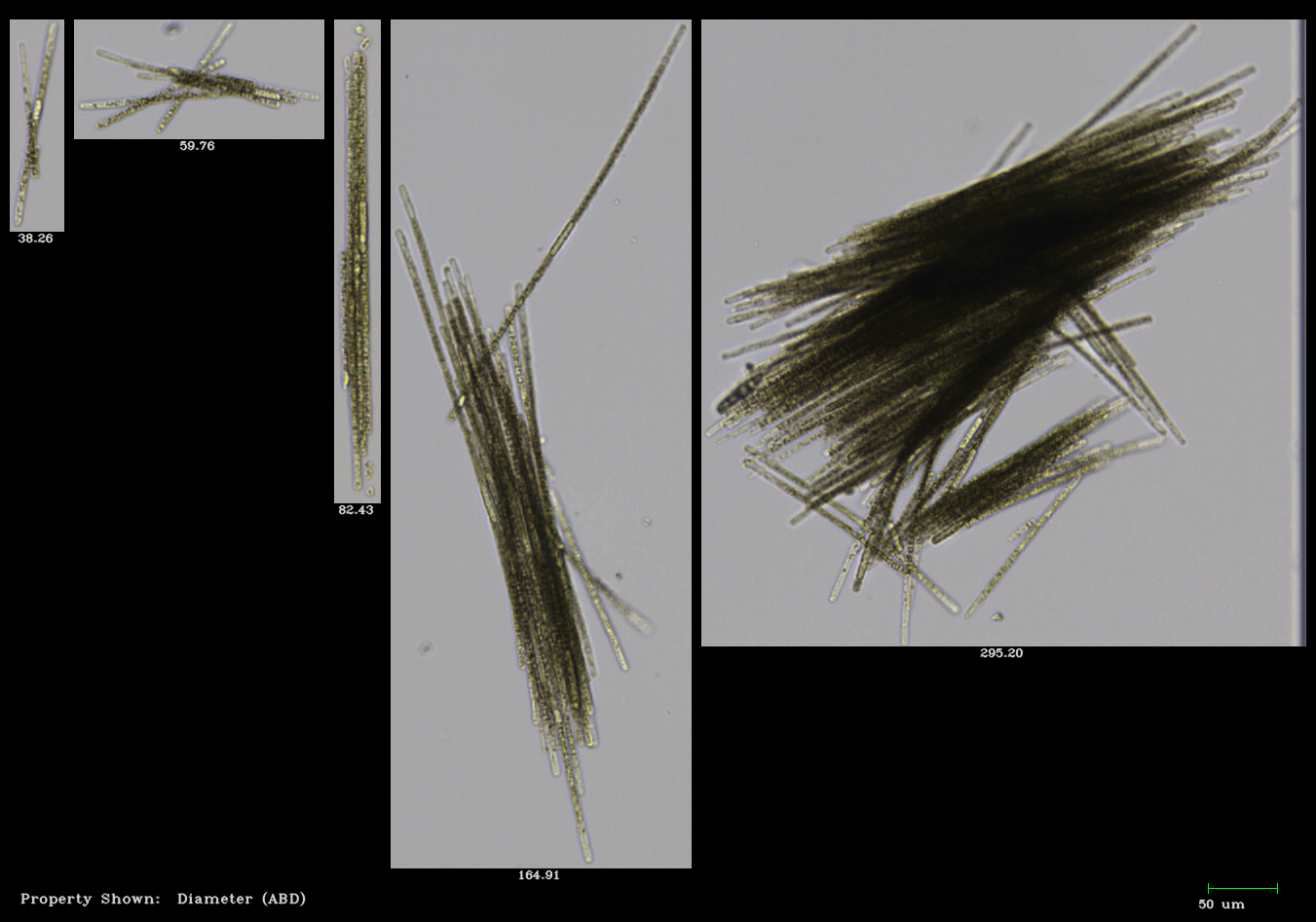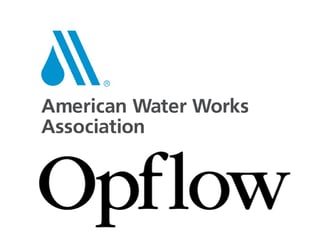The FlowCam has shown itself to be a complementary monitoring tool to aid in harmful algal bloom (HAB) mitigation and prevention.
In the summer of 2015, a New Jersey drinking water treatment facility conducted a study to test the efficacy of ultrasonic algal control buoys that prevent HABs within their reservoir. The ultrasonic buoys have on-board optical sensors to detect the pigments of the algae populations and adjust the sound wave frequency to target specific algae taxa.
While the buoys can be effective, their method of identifying algae is limited to simple pigment detection. The FlowCam was used during the ultrasonic buoy testing to aid identification, and to monitor the efficacy of the buoys for HAB remediation by counting cells and measuring biovolume.

A spike in Anabaena (shown directly above) and Aphanizomenon (shown at top) populations occurred in mid- to late-summer. The buoy’s optics failed to detect the presence of Aphanizomenon and counts as high as 40,000 units/mL were detected using the FlowCam. Immediately upon detection by the FlowCam, the buoys’ ultrasonic frequency was adjusted to target the bloom. The Aphanizomenon population dropped to 2,000 units/mL three days after initial detection. Simultaneous FlowCam monitoring during this trial enabled the municipality to identify and target the growing Aphanizomenon populations when the ultrasonic buoy optics failed and to mitigate the bloom before it reached a critical state.










